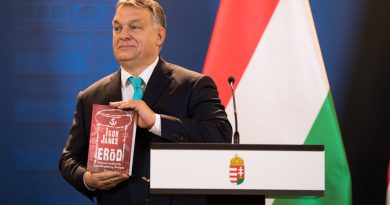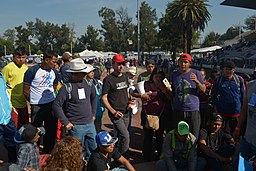Aftermath of US Airstrike on Syrian Air Base
Madison Feser
Staff Writer
In response to recent chemical attacks by Syrian President Bashar al-Assad, United States President Donald Trump ordered an airstrike on Syria’s Shayrat Air Base. On Friday, April 7, at three-thirty in the morning, local time, two Navy destroyers launched 59 Tomahawk cruise missiles, a move that has sparked international controversy.
Talal al-Barazi, governor of Homs province where the base is located, claims the strike killed five soldiers and eight civilians, reportsThe Washington Post.
The Shayrat Airfield, according to U.S. Department of Defense spokesperson Jeff Davis, stored chemical weapons used in the attack on Syria’s Idlib province. Davis says the U.S. took every precaution to avoid civilian and military casualties, such as conducting the strike when base activity was minimal and informing Russian authorities of the strike in advance.
Concerns regarding a lack of communication within the Trump Administration were raised when Secretary of State Rex Tillerson stated that the U.S. had “no discussions or prior contacts” with Russia regarding the strike, according to the Independent.
Russian President Vladimir Putin immediately condemned the attack as “an aggression against a sovereign state in violation of the norms of international law”, reports CNN. In response, the Kremlin called for a UN Security Council meeting and warned that the attack severely damaged U.S.-Russia relations. These relations may only continue to deteriorate as the U.S. begins its investigation into Russian involvement in the chemical attacks.
The chemical attacks included the use of sarin, a nerve agent, which a UN-enforced deal banned during the Obama Administration. According to NPR, UN Ambassador Nikki Haley told the UN Security Council that sarin use in Syria demonstrates a failing on the part of Russia, which was supposed to supervise the removal of Syrian chemical agents in 2013.
The outcome of Tillerson’s meeting in Moscow will largely determine the impact the strike has on U.S.-Russia relations.
As expected, Syria also spoke out against Trump’s retaliatory airstrike as an “erroneous American strategy”, claiming the U.S. is a partner of terrorist organizations, which similarly attack Syrian military facilities, according to CNN. Assad told Syria’s state-run news agency SANA that U.S. aggressions have only reinforced Syria’s determination to “strike the terrorist organizations” that wish to subject Syria to violence.
Part of the controversy concerns what legal authority Trump acted under. The Atlantic reports that Trump mentioned the possibility of military action in Syria to some congressional members, but did not seek Congressional approval prior to the strike. Unlike former President Barack Obama’s airstrikes against ISIS that were covered, arguably, by the Authorization for Use of Military Force (AUMF), Trump’s strike against the Assad regime has no legal standing in international law.
Despite the backlash, a threat of further escalation of violence, and contradictions within the Trump Administration, some analysts are calling the Administration’s decision a symbolic, yet isolated incident.
At a Pentagon press conference, U.S. Defense Secretary James Mattis said that U.S. aims in Syria remain on neutralizing ISIS, not removing Assad from power. Mattis continued by saying the U.S. airstrike was a singular attack “against the chemical weapons use”, according to The Guardian.
NPR speculates this major shift in American policy may be an attempt by the Trump Administration to distinguish itself from the Obama Administration, which faced sharp criticism for halting Syrian airstrikes in 2013.
Tillerson, according to The New York Times, says the U.S. will not “turn a blind eye” and normalize chemical attacks by failing to respond when they occur.


